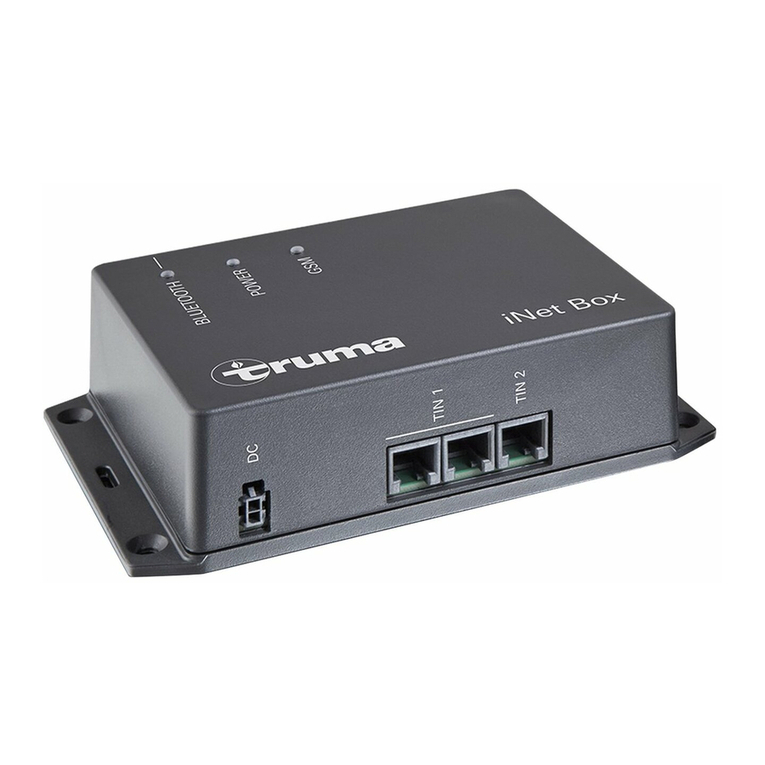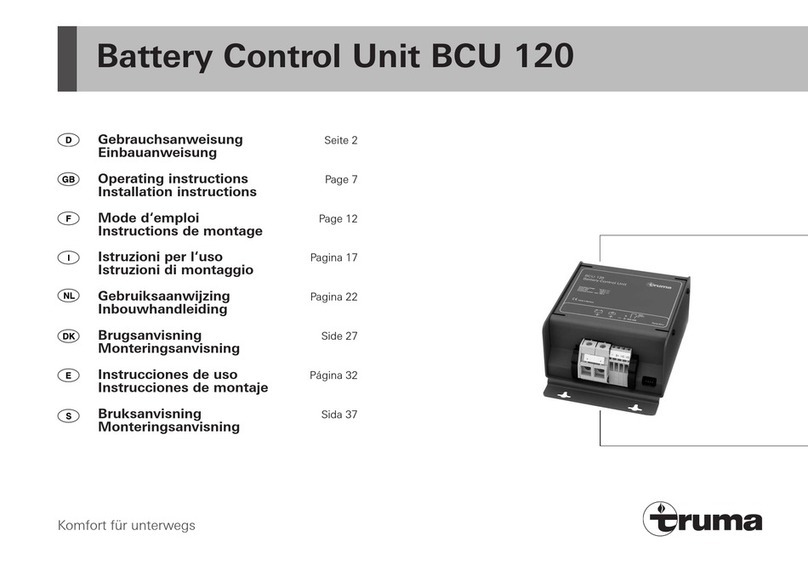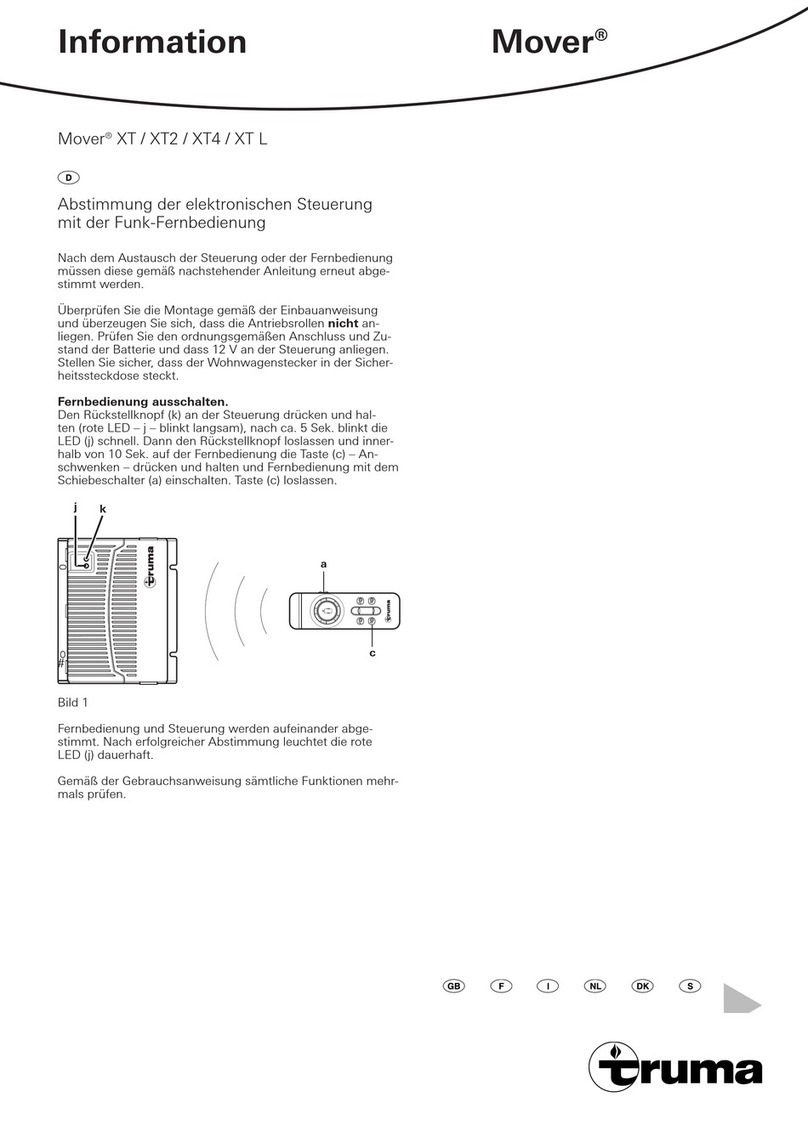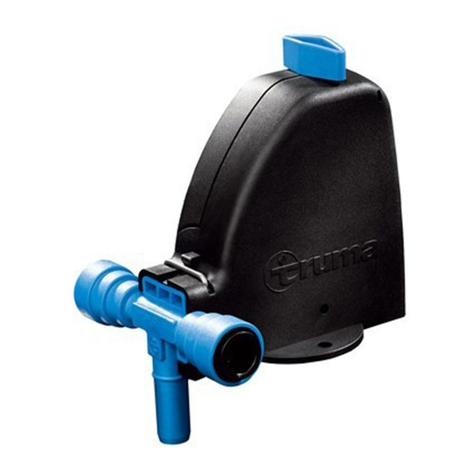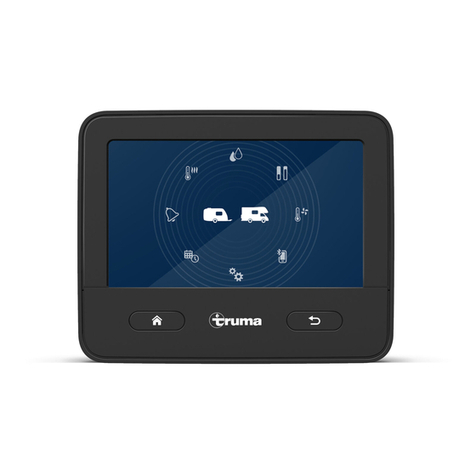
3
Aufstellen
Achten Sie darauf, dass die Geräte sicher aufgestellt werden
und nicht herabfallen oder umstürzen können. Legen Sie Lei-
tungen stets so, dass keine Stolpergefahr entsteht. Setzen Sie
Elektrogeräte nicht dem Regen aus. Betreiben Sie Elektroge-
räte nicht in feuchter oder nasser Umgebung. Betreiben Sie
Elektrogeräte nicht in der Nähe von brennbaren Flüssigkeiten
oder Gasen. Stellen Sie Ihre elektrischen Geräte so auf, dass
Kinder keinen Zugriff darauf haben.
Schutz vor elektrischem Schlag
Betreiben Sie nur Geräte deren Gehäuse und Leitungen un-
beschädigt sind. Achten Sie auf sichere Verlegung der Kabel.
Ziehen Sie nicht an den Kabeln.
Gebrauch
Benutzen Sie keine elektrischen Geräte entgegen dem, vom
Hersteller angegebenen Verwendungszweck.
Instandsetzung
Nehmen Sie keine Instandsetzungsarbeiten oder Verände-
rungen am Gerät vor. Wenden Sie sich an Ihren Händler oder
an den Truma Service (siehe Serviceheft oder www.truma.com).
Zubehör
Benutzen Sie nur Zubehörteile und Zusatzgeräte die vom Her-
steller geliefert oder empfohlen werden.
Verwendungszweck
Der Spannungslifter VB 10 regelt den Ladevorgang an 12 V
Bleiakkumulatoren, bestehend aus 6 Einzelzellen (z. B. Auto-
batterie), mit einer Kapazität von mindestens 50 Ah und
schaltet die 12 V Spannungsversorgung für den Kühlschrank.
Das Gerät ist für den Einbau in Caravans bestimmt.
Bestimmungswidriger Gebrauch
Nicht zum Laden von 6 V Bleiakkumulatoren, nicht-
aufladbaren Batterien oder Nickel-Cadmium-Batterien
verwenden! Diese Batteriearten können beim Laden mit
diesem Gerät explodieren.
Beschreibung
Im Fahrbetrieb des Gespannes wird die Versorgungsbatterie
(Batterie II) im Caravan über die Starterbatterie (Batterie I) in
Verbindung mit der Lichtmaschine des Zugfahrzeuges geladen
und zugleich der Kühlschrank versorgt. Um die Versorgungs-
batterie in einen optimalen Ladezustand zu bringen, ist eine
Spannung von mindestens 14,2 V notwendig. Diese Spannung
steht im Caravan durch Leitungsverluste nicht zur Verfügung.
Der Spannungslifter VB 10 regelt bei einer Eingangsspannung
zwischen 10 V – 15 V die Ausgangsspannung so, dass die
Versorgungsbatterie mit 14,2 V versorgt wird. Er gleicht Span-
nungsschwankungen sowie Leitungsverluste aus und schaltet
automatisch die 12 V Spannungsversorgung zum Kühlschrank.
Im Fahrbetrieb registriert das Gerät über die Leitung vom ge-
schaltetem Kontakt Nr. 10 am Kupplungsstecker, ob Spannung
anliegt und die Lichtmaschine läuft. Liegt Spannung an, regelt
das Gerät die Ausgangsspannung zur Versorgungsbatterie auf
14,2 V und der von Kontakt 9 am Kupplungsstecker des Zug-
fahrzeuges versorgte Kühlschrankausgang wird freigegeben.
Liegt nach Abstellen des Motors vom Zugfahrzeug keine
Spannung mehr am Kontakt 10 an, stellt das Gerät seinen
Betrieb ein und der Kühlschrank wird abgeschaltet. Hierdurch
wird eine Entladung der Starterbatterie durch die Versor-
gungsbatterie und den Kühlschrank verhindert. Die Startfähig-
keit der Starterbatterie bleibt erhalten.
